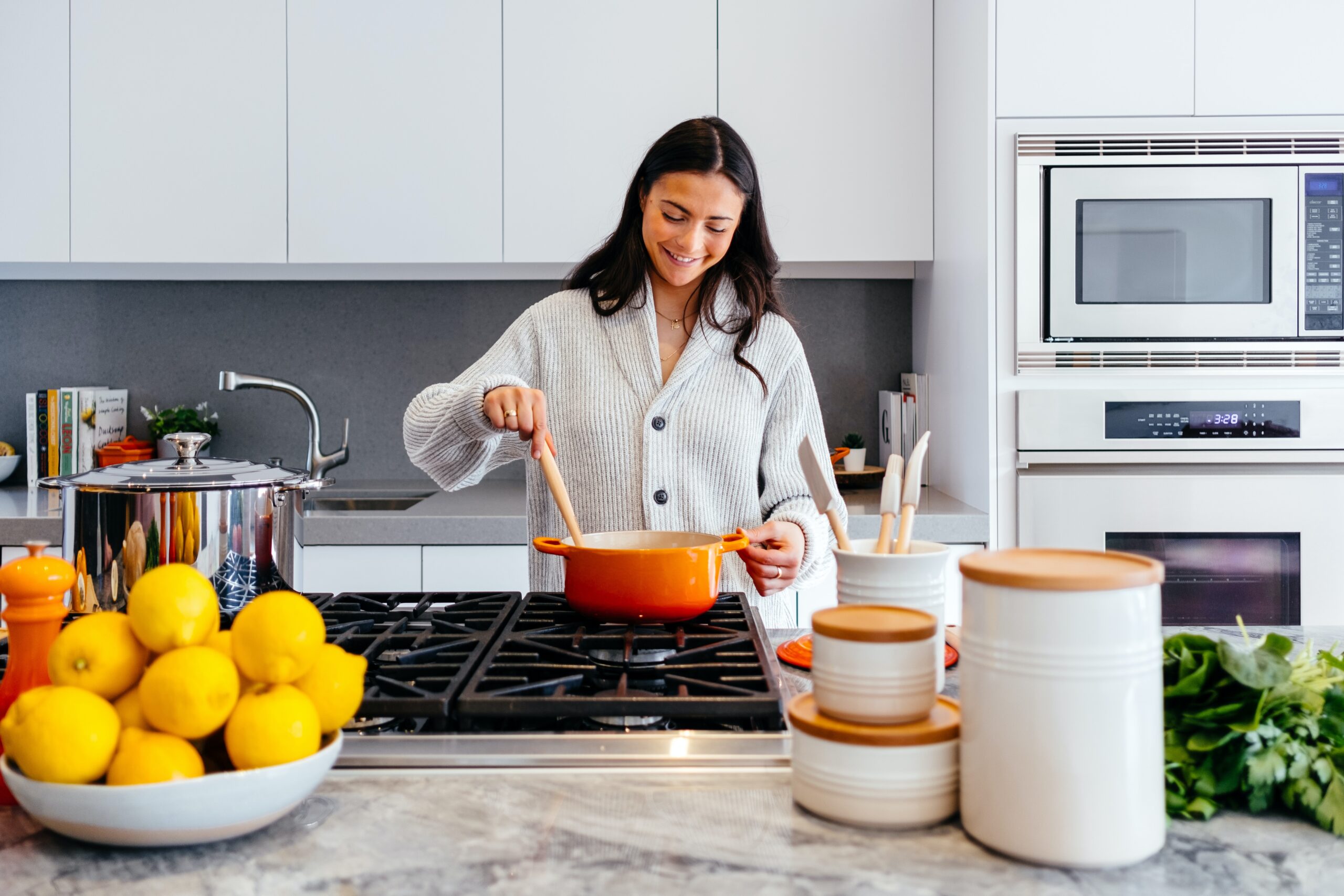(Bloomberg) —
The sizzle of a burger hitting a hot pan. The delicate char on roasted potatoes. The caramel parfum of a slice of toasting bread. We associate the sounds and smells of cooking with tasty, nutritious meals — but cooking is also a major source of indoor pollutants.
In 2020, Delphine Farmer, a professor of atmospheric chemistry at Colorado State University, co-authored a study that looked at the air-quality impact of cooking a full Thanksgiving dinner. The researchers prepared their meal — roasted turkey, stuffing, brussels sprouts, sweet potato casserole, pies, cranberry sauce and gravy — in a three-bedroom test home kitted out with pollution-monitoring equipment. They then repeated the experiment on a separate day.
The study found that indoor levels of a type of particulate matter known as PM2.5 were four times higher than the US Environmental Protection Agency’s standards for outdoor air pollution. (Most countries, including the US, don’t regulate indoor air pollution.)
PM2.5 gets its name from its size: 2.5 microns, or roughly half the size of a single cell of baker’s yeast. The particulate matter is so small that it lodges easily inside the lungs, where it can trigger asthma attacks, heart attack and stroke. The World Health Organization estimates that PM2.5 pollution is responsible for 4.2 million premature deaths per year.
Outside of the home, PM2.5 mostly comes from burning fossil fuels such as gasoline in cars or coal for electricity. Inside, cooking is one of the largest known sources.
To date, most of the attention on that threat has focused on the cooking surface. Multiple studies have shown that natural gas stoves, in particular, release significant pollution, even when they’re off. That includes nitrogen oxides, which are linked to asthma; and benzene, associated with cancer. It also includes methane, a greenhouse gas that doesn’t pose a direct threat to human health but is far more potent than carbon dioxide in the short term.
These drawbacks are often cited by groups and municipalities looking to limit new natural gas infrastructure in buildings, and hoping to promote the use of electric and induction ranges.
Read More:
- Are Gas Stoves Dangerous?
- Gas Stoves Mean Dangerous Pollution in Most Homes, Study Finds
- How Gas Stoves Became Part of America’s Culture Wars
- How to Improve Air Flow in Your House
But research suggests that the problem isn’t with gas alone: Cooking on any surface can add to indoor air pollution. It’s essentially home chemistry that releases both particulate pollution and potentially harmful gases known as volatile organic compounds (VOCs).
“Anytime you put some piece of material, whether it’s oil or meat or vegetable, onto a hot surface, you start a series of chemical reactions, and those create a series of chemical products,” Farmer says. “Many of them are delicious chemical products and we improve food safety and digestibility by cooking them appropriately. The challenge is that you simultaneously release a lot of compounds into the air.”
PM2.5 impacts are relatively straightforward, but VOCs released by cooking are more complicated, in part because not all VOCs are harmful. “If you cut open a lemon, you’re smelling a molecule called limonene,” Farmer says. “That limonene comes out at very high concentrations, but it’s not going to do any damage.”
Burning a meal, on the other hand, can release gases including isocyanic acid, a type of VOC that is both a powerful lung irritant and part of a class of compounds thought to be likely human carcinogens. Your cooking method — and what you’re making — also affect the particulates and gases released in the air. Steaming and boiling, for example, don’t create as much particulate matter as frying and stir-frying, says Marie Coggins, a senior lecturer in exposure science at the University of Galway in Ireland.
“We know that cooking meat is worse than cooking vegetables,” says Nicola Carslaw, a professor of indoor air chemistry at the University of York in the United Kingdom. “And we know that some oils are worse for cooking than others. So you should never heat up olive oil, despite what all these celebrity chefs tell you.”
The takeaway is not to subsist entirely on raw food, or to ruin Thanksgiving by boiling the turkey. Rather, researchers say everyone should be paying more attention to home ventilation, especially given growing attention to insulation and ensuring that homes are tightly sealed.
“Because of climate change, we have to improve the energy performance of our dwellings,” Coggins says. “And that normally means that we’re making them more airtight.”
In the kitchen, a vent hood that sucks air from above the stove and vents it outside is a great way to mitigate pollution, Farmer says. “I would go as far as to say to turn on the hood before you start cooking,” Coggins adds. Using the stove’s back burners is also preferable, as the particulate matter is more likely to get sucked into the hood that way. A vent hood can even be used when toasting bread or using an air fryer, both of which also emit particles.
This won’t be an option for everyone. Many kitchens lack a hood, or have one that simply recirculates air, essentially spreading the particles around instead of venting them. In those cases, “cracking a window open would also be really good,” Farmer says. Keeping a HEPA air filter near your kitchen can also help, though both Farmer and Coggins caution against filters that are ionizers, as they can generate ozone, itself a known respiratory irritant.
Between wildfire smoke and weather apps that alert us to poor air quality, “outdoor pollution is really front and center” in recent years, Coggins says. “But people don’t join the dots when it comes indoors. They don’t see there’s a hazard.”
To contact the author of this story:
Kendra Pierre-Louis in New York at kpierrelouis@bloomberg.net
© 2024 Bloomberg L.P.





